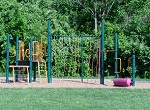SWOT Analysis Suggestions for Communities
Last Updated: June 25, 2025
Try a SWOT analysis session or a more detailed and well-researched strategic planning process when your community or neighborhood association feels unfocused or unsure of its future direction.

First, we need to unpack this acronym, which really will help you remember its components. S represents Strengths, W stands for Weaknesses, O means Opportunities, and T reminds you to notice external or internal Threats.
Before I participated in this kind of exercise in several settings, I doubted that it would produce anything new or useful.
But I am a big believer now that I have seen it work to bring up new ideas for communities that never considered their "threats" before, for example. Commonly SWOT analysis, which became popular first in business circles, is considered an element of strategic planning.
The One-Session SWOT Analysis to Start a Conversation
Since this section of the website is devoted to community and neighborhood organizations, we will start simple because if the SWOT analysis does not produce concrete results, at least you can say that you held an interesting program.
We are writing this page so it can apply to either the organization's own concerns and viability, or to the community at large. We do so for two reasons: (1) We know that our audience includes some elected officials, and (2) Most community organizations are so invested in their community that it is difficult to separate organizational issues from thinking about the neighborhood, town, or city as a whole.
So feel free to adapt these SWOT analysis techniques either to a small association or to a large city. By the way, this analysis would make a great board retreat, either for a neighborhood association or for an elected town board. The single-session technique is especially appropriate in the following situations.
• You don't have money for a consultant to prepare neighborhood plans or a comprehensive plan. Yet you want to have a meaningful dialogue about your future.
• You want to test the waters to see if a strategic planning process for your city or your organization would be fruitful.
• You want to produce a quick list of issues for citizens to review.
• You have a new board or committee, and you would like a simple conversation starter to help people get acquainted.
• You are able to gather all of the key participants in one place. We would not recommend that you try this as a virtual meeting. It is important for participants and the facilitator to feed off one another's energy and to read the full range of body language.
• You have determined you want to prepare a strategic plan, and you want a steering committee, city council, planning commission, or organizational board of directors to start the process. You could be interested in giving a consultant your early work to help them prepare for the task, or you could be benchmarking what people thought before a more researched and detailed SWOT analysis was prepared.
Conducting the Single-Session SWOT Analysis
To be fair, this single-session technique isn't truly an analysis, but rather a brainstorming session. So treat it as such, at least for the first hour or more. Don't discuss each item that someone wants to add to the list; simply add it without evaluation. There will be an opportunity for truth-telling later.
If the target of the SWOT analysis is your neighborhood association, a hired or volunteer facilitator other than the elected head should be found. This need not be a highly skilled facilitator, but should be someone experienced in running meetings, slightly knowledgeable about your issues or willing to become so in preparation for the session, and strong enough to keep the meeting from bogging down in discussion. Of course, don't choose someone who will be ego-involved in the results.
For this session, you'll definitely want the big chart on an easel or wall, with either the facilitator or a separate recorder given the task of writing short versions of the points raised by the audience. Be sure to have a number of sheets of the large paper, because when people get started, they are sure to have a number of entries.
Go in order of the SWOT acronym. This allows you to begin with strengths. The facilitator should insist on listing as many entries as people can think of for each category, the strengths, weaknesses, opportunities, and threats. So be prepared for pauses as the facilitator tests whether there are any new thoughts.
Groups in troubled neighborhoods may say at first that they have no strengths; that's most certainly not true, so the facilitator should insist. Organizations in well-heeled communities may say they face no neighborhood threats, in which event the facilitator can quickly retort that their threat might be complacency or lack of watchfulness.
I like going through the brainstorming as quickly as possible, if the group is at all likely to be able to do some true SWOT analysis later. Analysis here implies that you look for connections between items listed. Since strengths and weaknesses are essentially opposites, and opportunities and threats also may be opposites, you can note those connections and see if that causes people to rephrase or add to the list.
Part of the theory of SWOT analysis and strategic planning is that you need to look at both internal and external community opportunities, threats, and so forth. Definitely make sure the group includes items they can control and broader societal factors they can't hope to influence. In our opinion, it's this external trend discussion that is most often missing in neighborhood associations, community development corporations, and even suburban local governments.
Our experience with community groups is that they usually are much more adept at naming the internal factors, and less experienced in noticing and verbalizing perceived threats and opportunities from forces in the wider community, nation, and world. The facilitator needs to be ready for this phenomenon and come primed with some examples, which might include longer commute times, both parents working, more single-parent families, disgust with all politics including the local, long-term unemployment potential due to automation and global outsourcing, and so forth.
In the business setting, where strategic planning pioneered, it's easy to see that a threat may be what the competition is doing. While you're doing this exercise, it's meaningful to think of your community as being in a competition as well.
The reality is that your relative success at business attraction and retention, housing maintenance, community organizing, safety, and beautification largely determines the prospects for your neighborhood over the next couple of decades.
What to Do After You List the Community Strengths, Weaknesses, Threats, and Opportunities
After your list of SWOTs is generated, take your remaining time to do one or more of the following tasks.
1. If your time is short or if people are restless and want to move on quickly, ask folks to decide on the most important single community strength, weakness, opportunity, and threat. If people are leaving and bored, it's appropriate also to say simply that your board will study the results, which allows you to go any way you like afterward.
2. If you have set aside enough time, ask people what surprised them the most about the SWOTs listed. Allow a discussion to evolve.
3. If you're doing this as an advance exercise before employing a consultant or undertaking a more public and detailed strategic planning process, ask whether the group is still as enthusiastic about the next steps in the strategic plan, and why or why not.
4. Ask the group to discuss where research and fact-finding are needed. Some items on your flip chart probably will be established facts or well-founded predictions ("the highway repairs will cause more through traffic in our neighborhood"). Other bullet points might be subject to dispute or simply fact-finding.
5. If you have the working committee structure that any neighborhood association or other community-based organization should have, send the strengths, weaknesses, opportunities, and threats that resonated most strongly to the most closely related committee and ask the committee to report back to the entire group on what can or should be done to follow through.
6. If you decide to throw this decision open to the assembled group, discuss whether your results should be published in your neighborhood newsletter or whether a follow-up event for wider and additional discussion is needed.
Adapting the Basic Model to Multiple Sessions
If you are a community or community association board, it's appropriate to divide this task into at least three sessions. In the first session, do the SWOT brainstorming. For the second meeting, engage in a discussion of one or more of the six suggestions above. For a final session, decide on the next step or steps. What action do you wish to take?
Obviously, another possibility is that you allow this discussion to continue for months as long as it is lively. In this model, we would recommend one longer session of a couple of hours at least, in which the initial SWOT brainstorming is completed. It is most worthwhile to stretch this task to as much as a day, in fact; such a long session will be worthwhile in neighborhoods where residents are engaged, verbal, and opinionated or thoughtful.
Then schedule the follow-up as either special meetings several hours long, or devote at least half an hour per regular meeting to continuing the analysis.
But if you do decide to allow the process to take as long as it takes, agree at your first session after the brainstorming what you want to accomplish to consider the SWOT analysis task complete. This way people will have some sense of the goal of the process, and the process will be concluded in an orderly way instead of when arguments, boredom, or denial break it up.
Another important point for the multiple-session SWOT analysis, which we do recommend when entire towns and cities employ this technique, is assuring some measure of continuity from session to session. Decide on whether people will be allowed to join in at any time, and if so how you will meet the challenge of newcomers wanting to go back to square one. Make every effort to encourage participants to be present at the first meeting.
Also you must have a sense of whether the facilitator is empowered to decide when to call off the debate and declare consensus has been reached. If not, who determines when discussion is sufficient?
SWOT Analysis as a Springboard to Strategic Planning
Ideally, your SWOT analysis would lead to strategic planning, no matter how long the analysis takes and how much research and fact-checking is added to the basic brainstorming. See our answer to a site visitor's question about essential steps in strategic planning for communities.
There's no need to add a huge mystique to the term strategic planning. For neighborhoods and communities, it simply means researching and deciding on a strategy for how to move forward, now that you've thought about your strengths (what we've tended to call assets on these pages, as described in our asset-based community development page), your weaknesses (the usual target of planning efforts), your opportunities (favorable conditions or possibilities that you can create through hard work), and your threats (forces that are larger than you, such as regional economics, competition from other communities, and changing social preferences or state or federal laws).
Since we can't anticipate your SWOT analysis results, we'll just refer to the Sitemap, where you're likely to find some resources for your particular strategic planning.
Strategic Planning Compared to City and Town Planning
Often I'm asked the difference between planning, as used in the phrase "planning and zoning," and strategic planning. I don't think it's worthwhile to spend much time worrying about that, because both are useful. Just get one rolling.
But if you want to know, here is the short version.
1. Strategic planning tends to ignore elaborate demographic study and forecasting, existing conditions analysis, and map-based presentations of current and desired future conditions. Usually there is little to no emphasis on urban design unless design-related issues are really hot topics in your neighborhood.
2. Compared to typical community planning, strategic planning is much more likely to recognize outside threats from trends and forces that can't be controlled within the community.
3. Strategic planning inherently leads to implementation discussion. While any city plan worth its salt addresses implementation at length, sometimes it's an afterthought.
4. The city plan often is more concerned with setting forth a vision and an ideal future state on a broad range of topics, as detailed on our page about comprehensive plan contents. Strategic planning by nature involves identifying what steps are needed to take us from here to there. Typically strategic planning devotes less energy to developing a vision.
5. City planning tends to research everything but the kitchen sink, and then not draw conclusions about some of the facts unearthed. We should say that the best city plans do address the hard realities of implementation, but many do not. Strategic planning may gather much less information, and in fact could result in a viable product on the basis of a single brainstorming session.
6. Typically a city plan takes much longer to prepare, and follows some variation of the typical community planning process. Strategic planning may be quite brief at the neighborhood level, sometimes being reduced to one session only, as discussed on this page. While we highly recommend more than one session for an entire town or city, still strategic planning grounded in SWOT analysis serves more as a summary of already known knowledge and an action plan for moving forward than traditional city plans.
7. Both are potentially very important to the community, right down to the neighborhood scale.
An Emerging Technique: Power Mapping
Rising in popularity again is the old community organizer technique of power mapping. Instead of identifying strengths, weaknesses, threats, and opportunities, this technique begins with a problem or issue and then identifies organizations and individuals who might help solve that problem.
Then you begin to figure out who knows whom, in "six degrees of separation" style, until you identify how your organization might build a relationship with one or more problem solvers.
You map the strength of those relationships and also their relative power to impact the outcome that you want.
You can read more about power mapping, a focused problem-solving technique, on this site. Actually I like both SWOT analysis and power mapping for neighborhood associations, although I find SWOT analysis more effective in planning and strategizing, and power mapping more effective for working on specific issues or problems.
Topics To Prepare You for Planning a SWOT Analysis
If none of the above seem appropriate for your situation, we encourage you to visit our sitemap to find more relevant topics. The yellow box near the top of that page includes links to pdf files that bundle all of this website's page URLs appropriate for a particular audience (such as neighborhoods, suburbs, planning commissioners, and so forth) or subject matter area onto one sheet of paper.
Join GOOD COMMUNITY PLUS, which provides you monthly with short features or tips about timely topics for neighborhoods, towns and cities, community organizations, and rural or small town environments. Unsubscribe any time. Give it a try.



